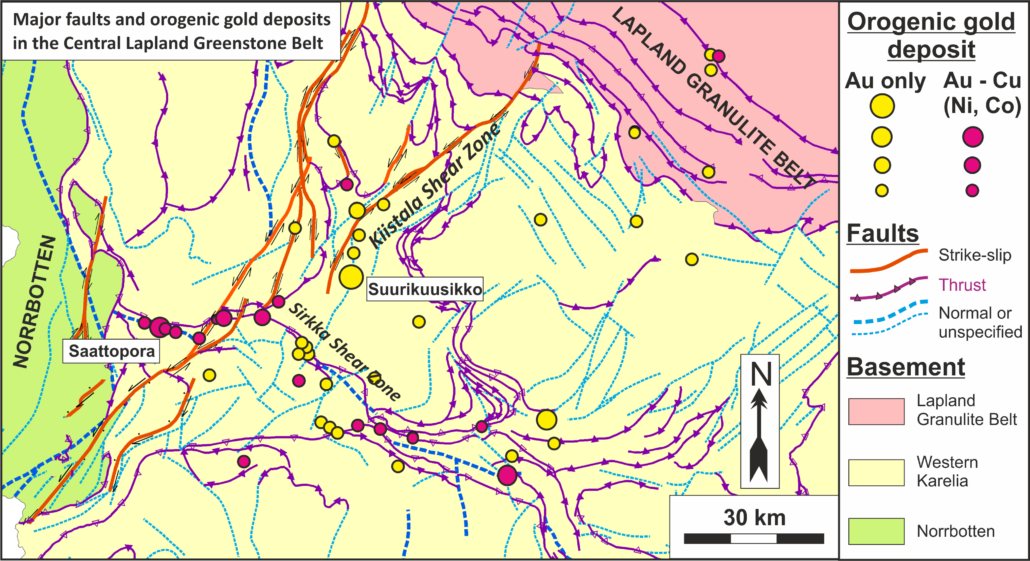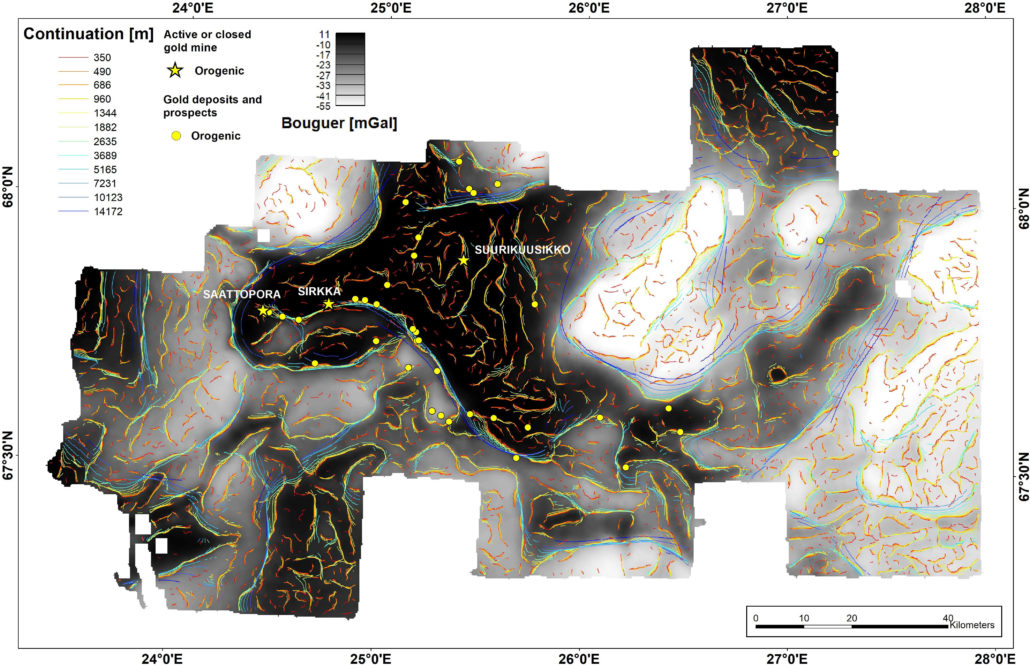Most of the known orogenic gold deposits and occurrences in the Central Lapland Greenstone Belt (CLGB) are located along the Kiistala Shear Zone (KiSZ) and the Sirkka Shear Zone (SSZ), as well as along some other shear zones and thrust faults. These zones and faults were re-activated several times during the ~ 150 Ma long Svecofennian (1.92-1.77 Ga) tectonic evolution which included five major stages:
D1 (1.92-1.90 Ga) – E-W contraction with formation of thrust faults. The Suurikuusikko gold deposit along the Kiistala Line has formed during this stage.
D2 (1.90-1.89 Ga) – N-S shortening event, where most of the strain was taken up by the northern and southern (SSZ) thrusts.
D3 (1.88-1.87 Ga) – tectonic vectors were switched from N-S to NE-SW and dextral strike-slip regime commenced along the KiSZ.
D4 (1.84-1.81 Ga) – a near-orthogonal switch of the regional stress regime from NE-SW to NW-SE flipped the kinematics of the KiSZ from dextral to sinistral.
D5 (1.77-1.76 Ga) – the last deformation phase produced widespread veining under E-W contraction. Accumulation of gold occurred in several deposits at this stage.
Due to the petrophysical differences among formations that have been juxtaposed next to each other along the major shear zones, the pseodogravity worms can be used to map out the potential conduits of fluid flow in the CLGB, which is largely covered by glaciogenic sediments.


